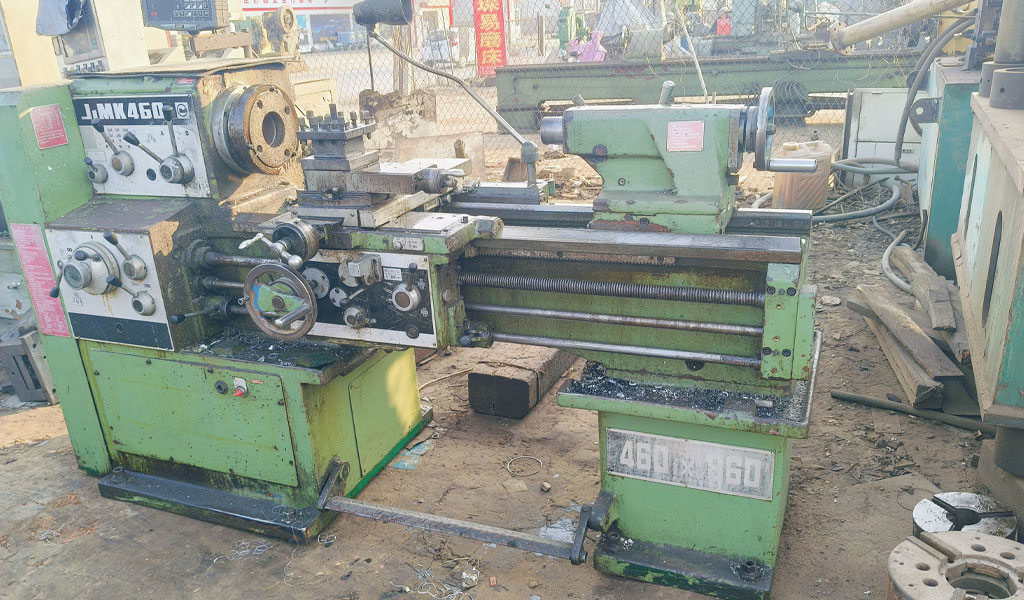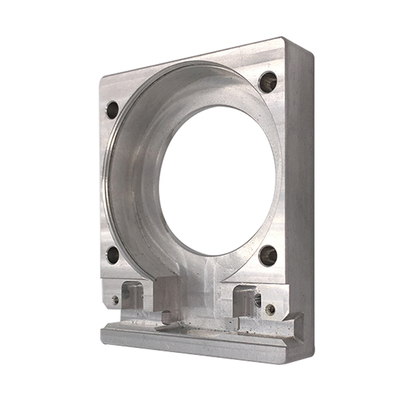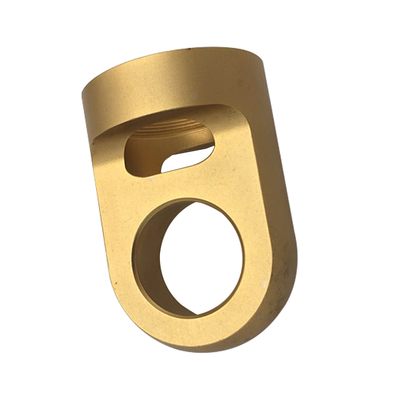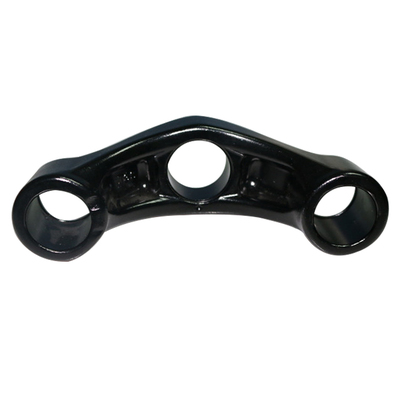Evolution Mechanism and Predictive Modeling of Tool Wear in CNC Milling of Superhard Metal Materials

CNC (Computer Numerical Control) milling is a cornerstone of modern manufacturing, enabling the production of complex components with high precision and repeatability. However, when milling superhard metal materials such as Inconel 718 and Hastelloy, tool wear emerges as a critical challenge, impacting machining efficiency, surface quality, and production costs. Superhard materials, often referred to as nickel-based superalloys, are prized for their exceptional mechanical properties, including high strength, corrosion resistance, and thermal stability at elevated temperatures. These attributes make them indispensable in industries such as aerospace, energy, and chemical processing, but they also render them notoriously difficult to machine, leading to accelerated tool wear and reduced tool life.
Tool wear in CNC milling is a multifaceted phenomenon driven by a combination of mechanical, thermal, and chemical interactions between the cutting tool and the workpiece. Understanding the evolution mechanisms of tool wear and developing accurate predictive models are essential for optimizing machining parameters, extending tool life, and minimizing production costs. This article provides a comprehensive exploration of the evolution mechanisms of tool wear in CNC milling of superhard materials, with a focus on Inconel 718 and Hastelloy. It examines the dominant wear mechanisms, the influence of cutting conditions, and the state-of-the-art predictive modeling techniques used to forecast tool wear. Detailed tables are included to compare wear mechanisms, modeling approaches, and experimental findings, offering a rigorous and scientific resource for researchers and practitioners in the field.
## Superhard Metal Materials: Properties and Challenges
### Overview of Superhard Materials
Superhard metal materials, particularly nickel-based superalloys like Inconel 718 and Hastelloy, are engineered for extreme environments. Inconel 718, a nickel-chromium alloy, is renowned for its high yield strength (approximately 1,100 MPa), excellent corrosion resistance, and ability to maintain mechanical properties at temperatures up to 700°C. Its composition, which includes nickel (50–55%), chromium (17–21%), iron, niobium, and molybdenum, contributes to its exceptional performance in applications such as gas turbine blades, aerospace components, and nuclear reactors. Similarly, Hastelloy, a family of nickel-based alloys (e.g., Hastelloy C-22HS, Hastelloy X), is characterized by its corrosion resistance and strength, particularly in chemical processing and aerospace applications. Hastelloy alloys typically contain nickel, molybdenum, chromium, and small amounts of cobalt and tungsten, enhancing their resistance to localized corrosion and high-temperature oxidation.
The mechanical properties of these materials, while advantageous for their end-use applications, pose significant challenges during machining. Their low thermal conductivity (approximately 11–15 W/m·K for Inconel 718) causes heat to concentrate at the tool-workpiece interface, leading to elevated cutting temperatures. Additionally, the presence of hard phases (e.g., γ″ and γ′ in Inconel 718, Ni2(Mo,Cr) in Hastelloy C-22HS) and carbides (e.g., TiC, NbC) increases the material's abrasiveness, accelerating tool wear. Work hardening, a phenomenon where the material's surface hardens during machining, further exacerbates tool wear by increasing cutting forces and stresses on the tool.
### Machining Challenges
Machining superhard materials is inherently challenging due to their high hardness (175–240 Brinell for Inconel 718 in cold-rolled condition), low thermal conductivity, and tendency to form built-up edges (BUE). These factors contribute to several machining difficulties:
- **High Cutting Temperatures**: The low thermal conductivity of superalloys causes heat to accumulate at the cutting zone, often exceeding 650°C, which can degrade tool materials and accelerate wear.
- **Abrasive Wear**: Hard carbides and phases in the material abrade the tool surface, leading to flank and crater wear.
- **Adhesive Wear**: The tendency of superalloys to adhere to the tool surface forms BUE, which can lead to pitting and flaking.
- **High Cutting Forces**: The high strength and work-hardening behavior of superalloys result in elevated cutting forces, increasing tool stress and wear rates.
- **Short Tool Life**: The combination of thermal, mechanical, and chemical stresses significantly reduces tool life, necessitating frequent tool changes and increasing production costs.
These challenges underscore the importance of understanding tool wear mechanisms and developing predictive models to optimize machining processes.
## Tool Wear Mechanisms in CNC Milling
### Overview of Tool Wear
Tool wear in CNC milling is a progressive degradation of the cutting tool due to interactions with the workpiece under high thermal, mechanical, and chemical stresses. It manifests in various forms, including flank wear, crater wear, notch wear, chipping, and thermal cracking. The evolution of tool wear typically follows three distinct stages:
1. **Initial Wear Stage**: Characterized by rapid wear due to the tool's initial contact with the workpiece, often involving micro-chipping and adhesion.
2. **Steady-State Wear Stage**: A period of relatively stable wear progression, where wear rates are more predictable and influenced by cutting parameters.
3. **Accelerated Wear Stage**: Marked by rapid deterioration, leading to tool failure, often due to cumulative damage from thermal and mechanical stresses.
In milling superhard materials, the dominant wear mechanisms include abrasive wear, adhesive wear, diffusive wear, and thermal cracking, each influenced by the material properties, tool characteristics, and cutting conditions.
### Abrasive Wear
Abrasive wear occurs when hard particles in the workpiece, such as carbides (e.g., TiC, NbC in Inconel 718), mechanically abrade the tool surface. This mechanism is prevalent in the flank and rake faces of the tool, leading to uniform material loss and the formation of wear lands. Studies have shown that abrasive wear is particularly significant in high-speed milling, where increased cutting speeds exacerbate the interaction between hard particles and the tool. For instance, a study on milling Inconel 718 with cemented carbide tools found that abrasive wear dominates at spindle speeds above 10,000 rpm, contributing to flank wear widths (VBmax) exceeding 0.3 mm after 315 cuts.[](https://journals.sagepub.com/doi/abs/10.1177/0954405416668925)
### Adhesive Wear
Adhesive wear results from the welding of workpiece material to the tool surface under high pressure and temperature, forming BUE. As the BUE is repeatedly formed and removed, it causes pitting and flaking on the tool surface. In milling Inconel 718, adhesive wear is a primary failure mechanism, particularly at lower cutting speeds (e.g., 36–50 m/min), where the material's tendency to adhere is pronounced. Research indicates that adhesive wear is responsible for notch wear near the depth-of-cut (DOC) line, with radial DOC being a critical factor influencing its severity.[](https://www.sciencedirect.com/science/article/abs/pii/S0043164812004681)
### Diffusive Wear
Diffusive wear occurs at high temperatures when atoms from the tool material diffuse into the workpiece or vice versa, weakening the tool's surface. This mechanism is significant in milling superalloys due to their high cutting temperatures. For example, when machining Hastelloy C-22HS with coated carbide tools, diffusion of titanium and chromium from the workpiece into the tool's matrix reduces its strength, leading to crater wear. Diffusive wear is particularly pronounced with cubic boron nitride (CBN) tools at cutting speeds above 80 m/min, where temperatures exceed the material's thermal stability threshold.[](https://www.sciencedirect.com/science/article/abs/pii/S0043164810004011)
### Thermal Cracking
Thermal cracking arises from cyclic thermal stresses caused by the intermittent cutting action in milling. The rapid heating and cooling cycles at the tool-workpiece interface induce thermal fatigue, leading to cracks on the tool's rake face. Studies on high-speed machining of Inconel 718 with CBN tools under high-pressure coolant conditions have shown that thermal cracking is a significant failure mode at cutting speeds above 150 m/min, particularly with low-CBN-content tools.[](https://www.fujipress.jp/ijat/au/ijate001400061045/)
### Other Wear Mechanisms
Additional wear mechanisms include:
- **Plastic Deformation**: High cutting forces and temperatures can cause the tool material to deform plastically, particularly in uncoated carbide tools.
- **Chipping**: Micro-fractures at the tool edge due to high mechanical stresses, often observed in ceramic tools at high feed rates.
- **Chemical Wear**: Chemical reactions between the tool and workpiece, such as oxidation, accelerate wear at elevated temperatures.
Table 1 summarizes the primary tool wear mechanisms observed in CNC milling of Inconel 718 and Hastelloy, along with their influencing factors and typical manifestations.
**Table 1: Tool Wear Mechanisms in CNC Milling of Inconel 718 and Hastelloy**
| **Wear Mechanism** | **Description** | **Influencing Factors** | **Typical Manifestation** | **References** |
|--------------------|-----------------|-------------------------|---------------------------|----------------|
| Abrasive Wear | Mechanical abrasion by hard particles in the workpiece | High spindle speed, hard carbides (TiC, NbC), tool material hardness | Flank wear, wear lands | |[](https://journals.sagepub.com/doi/abs/10.1177/0954405416668925)
| Adhesive Wear | Welding of workpiece material to tool, forming BUE | Low cutting speed, high pressure, material adhesion tendency | Notch wear, pitting, flaking | |[](https://www.sciencedirect.com/science/article/abs/pii/S0043164812004681)
| Diffusive Wear | Atomic diffusion between tool and workpiece at high temperatures | High cutting temperature, chemical compatibility | Crater wear, tool weakening | |[](https://www.sciencedirect.com/science/article/abs/pii/S0043164810004011)
| Thermal Cracking | Cracks due to cyclic thermal stresses | High cutting speed, intermittent cutting, coolant pressure | Rake face cracks | |[](https://www.fujipress.jp/ijat/au/ijate001400061045/)
| Plastic Deformation| Tool material deformation under high forces | High cutting forces, low tool material strength | Edge deformation | |[](https://www.mdpi.com/2227-9717/10/11/2380)
| Chipping | Micro-fractures at tool edge | High feed rate, brittle tool materials | Edge fractures | |[](https://www.sciencedirect.com/science/article/abs/pii/S0043164810004011)
| Chemical Wear | Chemical reactions (e.g., oxidation) | High temperature, reactive workpiece | Surface degradation | |[](https://www.mdpi.com/2227-9717/10/11/2380)
## Factors Influencing Tool Wear
### Cutting Parameters
Cutting parameters, including cutting speed, feed rate, depth of cut (DOC), and spindle speed, significantly influence tool wear in CNC milling of superhard materials. Their effects are summarized below:
- **Cutting Speed**: Higher cutting speeds increase cutting temperatures, accelerating diffusive and thermal wear. For example, a study on Inconel 718 milling found that increasing cutting speed from 36 m/min to 55 m/min doubled the flank wear rate.[](https://www.sciencedirect.com/science/article/abs/pii/S175558171100040X)
- **Feed Rate**: Higher feed rates increase cutting forces, promoting adhesive wear and chipping. Optimal feed rates (e.g., 0.1–0.15 mm/rev) balance tool life and surface quality.[](https://www.mechanics-industry.org/articles/meca/full_html/2020/02/mi190203/mi190203.html)
- **Depth of Cut**: Larger radial and axial DOCs increase material removal rates but exacerbate notch wear, particularly at the DOC line.[](https://www.sciencedirect.com/science/article/abs/pii/S0043164812004681)
- **Spindle Speed**: High spindle speeds (e.g., 10,000 rpm) enhance machining efficiency but increase abrasive wear due to increased tool-workpiece interactions.[](https://journals.sagepub.com/doi/abs/10.1177/0954405416668925)
### Tool Material and Coatings
The choice of tool material and coatings significantly affects wear resistance. Common tool materials for milling superhard materials include:
- **Cemented Carbide**: Widely used due to its toughness and versatility, but prone to abrasive and adhesive wear. Multilayer coatings (e.g., TiAlN/TiAl) improve wear resistance by 20–40%.[](https://www.mscdirect.com/betterMRO/mastering-inconel-machining)
- **Cubic Boron Nitride (CBN)**: Suitable for high-speed machining due to its high hardness and thermal stability, but susceptible to thermal cracking at high coolant pressures.[](https://www.fujipress.jp/ijat/au/ijate001400061045/)
- **Ceramic Tools**: Whisker-reinforced ceramics (e.g., SiAlON) offer superior toughness for Hastelloy, but chipping is a concern at high feed rates.[](https://www.mscdirect.com/betterMRO/techniques-tools-machining-hastelloy)
Coatings such as AlTiN and TiAlN enhance wear resistance by reducing friction and increasing hot hardness. Silicon-based coatings have shown a 50% increase in tool life when milling Inconel 718.[](https://www.mscdirect.com/betterMRO/mastering-inconel-machining)
### Cooling and Lubrication Strategies
Cooling and lubrication strategies, such as minimum quantity lubrication (MQL), high-pressure coolant (HPC), and cryogenic cooling, influence tool wear by controlling cutting temperatures and friction:
- **MQL**: Reduces tool wear by 20–30% compared to dry cutting by minimizing friction and heat.[](https://link.springer.com/article/10.1007/s00170-018-1911-3)
- **HPC**: Suppresses crater wear but can accelerate notching at high pressures (e.g., 20.3 MPa) due to water jet impingement.[](https://www.sciencedirect.com/science/article/abs/pii/S0043164810004011)
- **Cryogenic Cooling**: Using liquid nitrogen or CO2, it reduces cutting temperatures, extending tool life by up to 40% in Inconel 625 milling.[](https://www.mdpi.com/2227-9717/10/11/2380)
Table 2 compares the impact of different cooling strategies on tool wear in milling superhard materials.
**Table 2: Impact of Cooling Strategies on Tool Wear in CNC Milling**
| **Cooling Strategy** | **Tool Wear Reduction** | **Advantages** | **Limitations** | **References** |
|----------------------|-------------------------|----------------|-----------------|----------------|
| Dry Cutting | Baseline | Cost-effective, simple | High temperatures, severe wear | |[](https://link.springer.com/article/10.1007/s00170-018-1911-3)
| MQL | 20–30% | Reduced friction, eco-friendly | Limited cooling capacity | |[](https://link.springer.com/article/10.1007/s00170-018-1911-3)
| HPC | 30–50% (crater wear) | Effective cooling, chip removal | Notching at high pressures | |[](https://www.sciencedirect.com/science/article/abs/pii/S0043164810004011)
| Cryogenic Cooling | Up to 40% | Low temperatures, improved surface quality | High cost, complex setup | |[](https://www.mdpi.com/2227-9717/10/11/2380)
### Workpiece Material Properties
The microstructure and composition of superhard materials directly influence tool wear. For instance, the γ″ and γ′ phases in Inconel 718 increase shear strength, promoting adhesive wear, while the Ni2(Mo,Cr) particles in Hastelloy C-22HS enhance abrasion resistance, leading to abrasive wear,. Heat treatment, such as double aging in Inconel 718, further increases hardness, exacerbating tool wear.[](https://www.sciencedirect.com/science/article/abs/pii/S0301679X25001574)[](https://www.sciencedirect.com/science/article/abs/pii/S0043164810004011)[](https://www.sciencedirect.com/science/article/abs/pii/S0043164812004681)
## Predictive Modeling of Tool Wear
### Importance of Predictive Modeling
Accurate prediction of tool wear is critical for optimizing CNC milling processes, reducing downtime, and minimizing costs. Predictive models enable manufacturers to forecast tool life, schedule tool changes, and optimize cutting parameters. Given the complexity of tool wear in superhard materials, predictive models must account for multiple wear mechanisms, cutting conditions, and material properties. Two primary approaches dominate tool wear prediction: physics-based models and data-driven models.
### Physics-Based Models
Physics-based models rely on empirical relationships and mechanistic understanding of wear processes. They incorporate parameters such as cutting forces, temperatures, and material properties to predict wear rates. Common physics-based models include:
- **Taylor's Tool Life Equation**: An empirical model relating tool life to cutting speed, feed rate, and DOC. While simple, it lacks generality for superalloys due to their complex wear mechanisms.[](https://www.academia.edu/69451806/Modelling_tool_wear_in_cemented_carbide_machining_alloy_718)
- **Finite Element Method (FEM)**: Simulates tool wear by modeling chip formation, heat transfer, and stress distribution. FEM models, such as those implemented in DEFORM or ABAQUS, have been used to simulate milling of Inconel 718, but they often suffer from mesh distortion at high wear rates.[](https://www.sciencedirect.com/science/article/abs/pii/S0301679X25001574)
- **Mechanistic Models**: These models integrate wear mechanisms (e.g., abrasive, adhesive) with tool geometry and cutting forces. A mechanistic model for Inconel 718 milling achieved 98.5% accuracy in predicting cutting forces by incorporating flank wear effects.[](https://www.sciencedirect.com/science/article/abs/pii/S1526612520308781)
Despite their mechanistic rigor, physics-based models require extensive experimental data for calibration and struggle to adapt to varying cutting conditions.
### Data-Driven Models
Data-driven models leverage machine learning (ML) and statistical techniques to predict tool wear based on historical data. These models excel in capturing complex, non-linear relationships without requiring detailed mechanistic knowledge. Key data-driven approaches include:
- **Artificial Neural Networks (ANNs)**: ANNs predict tool wear by mapping input parameters (e.g., cutting speed, feed rate, cutting forces) to wear outputs. A study on Inconel 718 turning achieved higher accuracy with ANNs compared to regression analysis, particularly with limited data.[](https://www.sciencedirect.com/science/article/abs/pii/S175558171100040X)
- **Long Short-Term Memory (LSTM) Networks**: LSTM networks, suitable for time-series data, have been used to predict flank wear in micro-milling of Inconel 718, achieving a correlation coefficient of 0.9453 with flank wear measurements.[](https://www.sciencedirect.com/science/article/abs/pii/S0141635923002039)
- **Meta-Learning Models**: These models adapt to varying cutting conditions with minimal data. A meta-learning model for titanium alloy milling achieved high accuracy with just one sample under new conditions.[](https://www.sciencedirect.com/science/article/abs/pii/S0007850619300113)
- **Autoregressive Integrated Moving Average (ARIMA)**: Combined with wavelet neural networks (WNN), ARIMA-WNN models predict flank wear in high-speed milling of Inconel 718 with over 95% accuracy.[](https://www.sciencedirect.com/science/article/abs/pii/S2213846322001924)
### Hybrid Models
Hybrid models combine physics-based and data-driven approaches to leverage their strengths. For example, a data-driven physics coupling approach using ARIMA and WNN was applied to Inconel 718 milling, achieving high accuracy by incorporating empirical wear models with time-series analysis. Another hybrid model using Levenberg-Marquardt and ANN predicted tool wear in rotary ultrasonic machining of Inconel 718, outperforming traditional models.[](https://www.sciencedirect.com/science/article/abs/pii/S2213846322001924)[](https://www.sciencedirect.com/science/article/abs/pii/S2214785321082468)
Table 3 compares various predictive modeling approaches for tool wear in CNC milling of superhard materials.
**Table 3: Predictive Modeling Approaches for Tool Wear in CNC Milling**
| **Model Type** | **Approach** | **Accuracy** | **Advantages** | **Limitations** | **References** |
|----------------|--------------|--------------|----------------|-----------------|----------------|
| Taylor's Equation | Physics-Based | Low–Moderate | Simple, empirical | Limited generality | |[](https://www.academia.edu/69451806/Modelling_tool_wear_in_cemented_carbide_machining_alloy_718)
| FEM (DEFORM/ABAQUS) | Physics-Based | Moderate–High | Detailed mechanistic insights | Mesh distortion, high computational cost | |[](https://www.sciencedirect.com/science/article/abs/pii/S0301679X25001574)
| Mechanistic Model | Physics-Based | 98.5% (force prediction) | Integrates wear mechanisms | Requires extensive calibration | |[](https://www.sciencedirect.com/science/article/abs/pii/S1526612520308781)
| ANN | Data-Driven | High | Handles non-linear relationships | Requires large datasets | |[](https://www.sciencedirect.com/science/article/abs/pii/S175558171100040X)
| LSTM | Data-Driven | 0.9453 (correlation) | Suitable for time-series | Complex training process | |[](https://www.sciencedirect.com/science/article/abs/pii/S0141635923002039)
| Meta-Learning | Data-Driven | High (few samples) | Adapts to new conditions | Limited validation | |[](https://www.sciencedirect.com/science/article/abs/pii/S0007850619300113)
| ARIMA-WNN | Hybrid | >95% | Combines physics and data | Complex model structure | |[](https://www.sciencedirect.com/science/article/abs/pii/S2213846322001924)
| LM-ANN | Hybrid | High | Balances accuracy and efficiency | Requires optimization | |[](https://www.sciencedirect.com/science/article/abs/pii/S2214785321082468)
## Experimental Studies and Findings
### Milling Inconel 718
Numerous experimental studies have investigated tool wear in CNC milling of Inconel 718. A study using cemented carbide tools with a coupled Euler-Lagrange (CEL) FEM model found that abrasive and adhesive wear dominate at cutting speeds of 36–55 m/min, with flank wear rates increasing with temperature. Another study on high-speed milling at 10,000 rpm identified mechanical wear as the primary mechanism during initial and steady-state stages, transitioning to compound wear (abrasive, adhesive, and diffusive) in the accelerated stage. MQL-assisted milling reduced flank wear by 20–30% compared to dry cutting, highlighting the role of lubrication.[](https://www.sciencedirect.com/science/article/abs/pii/S0301679X25001574)[](https://journals.sagepub.com/doi/abs/10.1177/0954405416668925)[](https://link.springer.com/article/10.1007/s00170-018-1911-3)
### Milling Hastelloy
Hastelloy, particularly C-22HS, exhibits similar wear challenges. A study on turning Hastelloy C-22HS with coated carbide tools found that diffusion and adhesive wear were predominant, with high-pressure coolant reducing cutting forces but accelerating notching at 20.3 MPa. Cryogenic cooling with CO2 improved tool life by 40% in milling Hastelloy X, attributed to reduced cutting temperatures.[](https://www.sciencedirect.com/science/article/abs/pii/S0043164810004011)[](https://www.mscdirect.com/betterMRO/techniques-tools-machining-hastelloy)
### Comparative Analysis
Table 4 summarizes key experimental findings on tool wear in milling Inconel 718 and Hastelloy.
**Table 4: Experimental Findings on Tool Wear in CNC Milling**
| **Material** | **Tool Type** | **Cutting Conditions** | **Dominant Wear Mechanisms** | **Key Findings** | **References** |
|--------------|---------------|------------------------|------------------------------|------------------|----------------|
| Inconel 718 | Cemented Carbide | 36–55 m/min, 0.15 mm/rev | Abrasive, Adhesive | Flank wear rate doubles with speed | |[](https://www.sciencedirect.com/science/article/abs/pii/S175558171100040X)
| Inconel 718 | Carbide (PVD-coated) | 8000 rpm, 0.125 mm DOC | Notch, Flaking | Notch wear at DOC line | |[](https://www.sciencedirect.com/science/article/abs/pii/S0043164812004681)
| Inconel 718 | CBN | 150 m/min, HPC | Thermal Cracking | Cracking suppressed with H-CBN | |[](https://www.fujipress.jp/ijat/au/ijate001400061045/)
| Hastelloy C-22HS | Coated Carbide | High-pressure coolant | Diffusion, Adhesive | Notching at 20.3 MPa | |[](https://www.sciencedirect.com/science/article/abs/pii/S0043164810004011)
| Hastelloy X | Ceramic (SiAlON) | Cryogenic CO2 | Abrasive, Adhesive | 40% tool life improvement | |[](https://www.mscdirect.com/betterMRO/techniques-tools-machining-hastelloy)
## Optimization Strategies
### Cutting Parameter Optimization
Optimizing cutting parameters is critical for minimizing tool wear. Response Surface Methodology (RSM) and Analysis of Variance (ANOVA) have been used to identify optimal parameters for Inconel 718 turning, with cutting speeds of 100 m/min and feed rates of 0.1 mm/rev yielding the best surface finish and tool life. Particle Swarm Optimization (PSO) and Bacteria Foraging Optimization (BFO) reduced flank wear by optimizing cutting speed, feed rate, and DOC in MQL-assisted milling.[](https://www.mechanics-industry.org/articles/meca/full_html/2020/02/mi190203/mi190203.html)[](https://link.springer.com/article/10.1007/s00170-018-1911-3)
### Tool Design and Selection
Advanced tool designs, such as variable helix and pitch angles, reduce wear by minimizing vibrations and cutting forces. CBN tools with high-CBN content are recommended for high-speed machining due to their lower thermal expansion coefficient. Coatings like AlTiN and silicon-based coatings enhance wear resistance, particularly in abrasive conditions.[](https://www.sciencedirect.com/science/article/abs/pii/S1526612520308781)[](https://www.fujipress.jp/ijat/au/ijate001400061045/)[](https://www.mscdirect.com/betterMRO/mastering-inconel-machining)
### Advanced Cooling Techniques
Cryogenic cooling and MQL offer significant benefits in reducing tool wear. A study on Inconel 625 milling with low-temperature CO2 reported improved surface morphology and delayed wear progression. Hybrid cooling systems, combining MQL with cryogenic fluids, show promise but require further research for predictive modeling.[](https://www.mdpi.com/2227-9717/10/11/2380)[](https://mfr.edp-open.org/articles/mfreview/full_html/2023/01/mfreview220071/mfreview220071.html)
## Future Directions
### Emerging Technologies
Emerging technologies, such as additive manufacturing (AM) of tools and hybrid machining processes (e.g., electrical discharge machining with milling), offer potential for reducing tool wear. AM Inconel 718 parts exhibit different machinability compared to wrought material, necessitating tailored wear models. Hybrid cooling systems and advanced coatings, such as nanocomposite hard coatings, are also areas of active research.[](https://www.sciencedirect.com/science/article/abs/pii/S1526612520308781)[](https://cdnsciencepub.com/doi/abs/10.1139/tcsme-2019-0110)
### Research Gaps
Despite advances, several research gaps remain:
- **Hybrid Cooling Models**: Limited studies on predictive models for hybrid cooling in superalloy machining.
- **Real-Time Monitoring**: Integration of real-time tool condition monitoring (TCM) with predictive models for adaptive control.
- **Multi-Physics Models**: Development of comprehensive models that couple thermal, mechanical, and chemical wear mechanisms.
- **Sustainability**: Incorporating energy efficiency and environmental impact into wear prediction models.
### Conclusion
The CNC milling of superhard materials like Inconel 718 and Hastelloy presents significant challenges due to their high strength, low thermal conductivity, and abrasive nature. Tool wear mechanisms, including abrasive, adhesive, diffusive, and thermal cracking, are influenced by cutting parameters, tool materials, and cooling strategies. Predictive modeling, encompassing physics-based, data-driven, and hybrid approaches, plays a crucial role in forecasting tool wear and optimizing machining processes. Experimental studies highlight the efficacy of advanced cooling techniques and optimized parameters in extending tool life. Future research should focus on integrating real-time monitoring, developing multi-physics models, and exploring sustainable machining practices to further enhance the efficiency and cost-effectiveness of milling superhard materials.
Reprint Statement: If there are no special instructions, all articles on this site are original. Please indicate the source for reprinting:https://www.cncmachiningptj.com/,thanks!
 PTJ® provides a full range of Custom Precision cnc machining china services.ISO 9001:2015 &AS-9100 certified. 3, 4 and 5-axis rapid precision CNC machining services including milling, turning to customer specifications,Capable of metal & plastic machined parts with +/-0.005 mm tolerance.Secondary services include CNC and conventional grinding, drilling,die casting,sheet metal and stamping.Providing prototypes, full production runs, technical support and full inspection.Serves the automotive, aerospace, mold&fixture,led lighting,medical,bicycle, and consumer electronics industries. On-time delivery.Tell us a little about your project's budget and expected delivery time. We will strategize with you to provide the most cost-effective services to help you reach your target,Welcome to Contact us ( [email protected] ) directly for your new project.
PTJ® provides a full range of Custom Precision cnc machining china services.ISO 9001:2015 &AS-9100 certified. 3, 4 and 5-axis rapid precision CNC machining services including milling, turning to customer specifications,Capable of metal & plastic machined parts with +/-0.005 mm tolerance.Secondary services include CNC and conventional grinding, drilling,die casting,sheet metal and stamping.Providing prototypes, full production runs, technical support and full inspection.Serves the automotive, aerospace, mold&fixture,led lighting,medical,bicycle, and consumer electronics industries. On-time delivery.Tell us a little about your project's budget and expected delivery time. We will strategize with you to provide the most cost-effective services to help you reach your target,Welcome to Contact us ( [email protected] ) directly for your new project.

- 5 Axis Machining
- Cnc Milling
- Cnc Turning
- Machining Industries
- Machining Process
- Surface Treatment
- Metal Machining
- Plastic Machining
- Powder Metallurgy Mold
- Die Casting
- Parts Gallery
- Auto Metal Parts
- Machinery Parts
- LED Heatsink
- Building Parts
- Mobile Parts
- Medical Parts
- Electronic Parts
- Tailored Machining
- Bicycle Parts
- Aluminum Machining
- Titanium Machining
- Stainless Steel Machining
- Copper Machining
- Brass Machining
- Super Alloy Machining
- Peek Machining
- UHMW Machining
- Unilate Machining
- PA6 Machining
- PPS Machining
- Teflon Machining
- Inconel Machining
- Tool Steel Machining
- More Material





